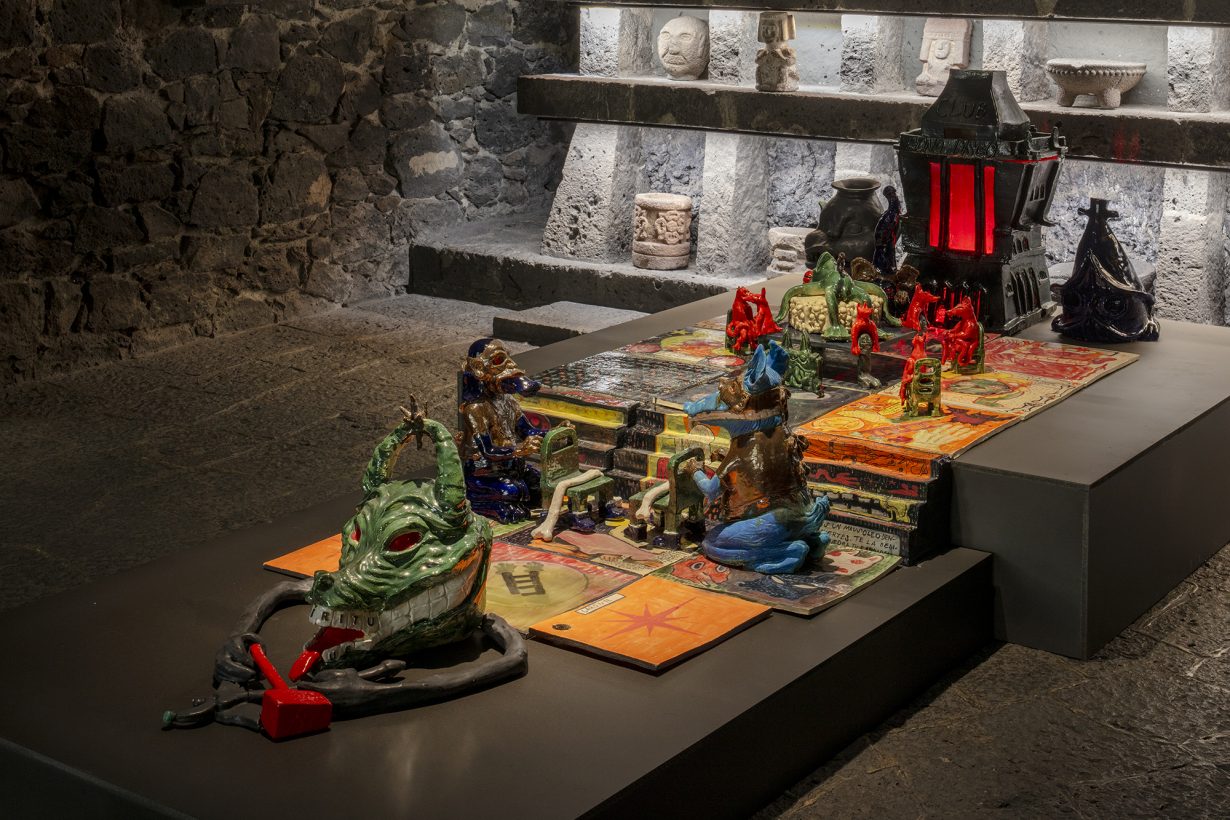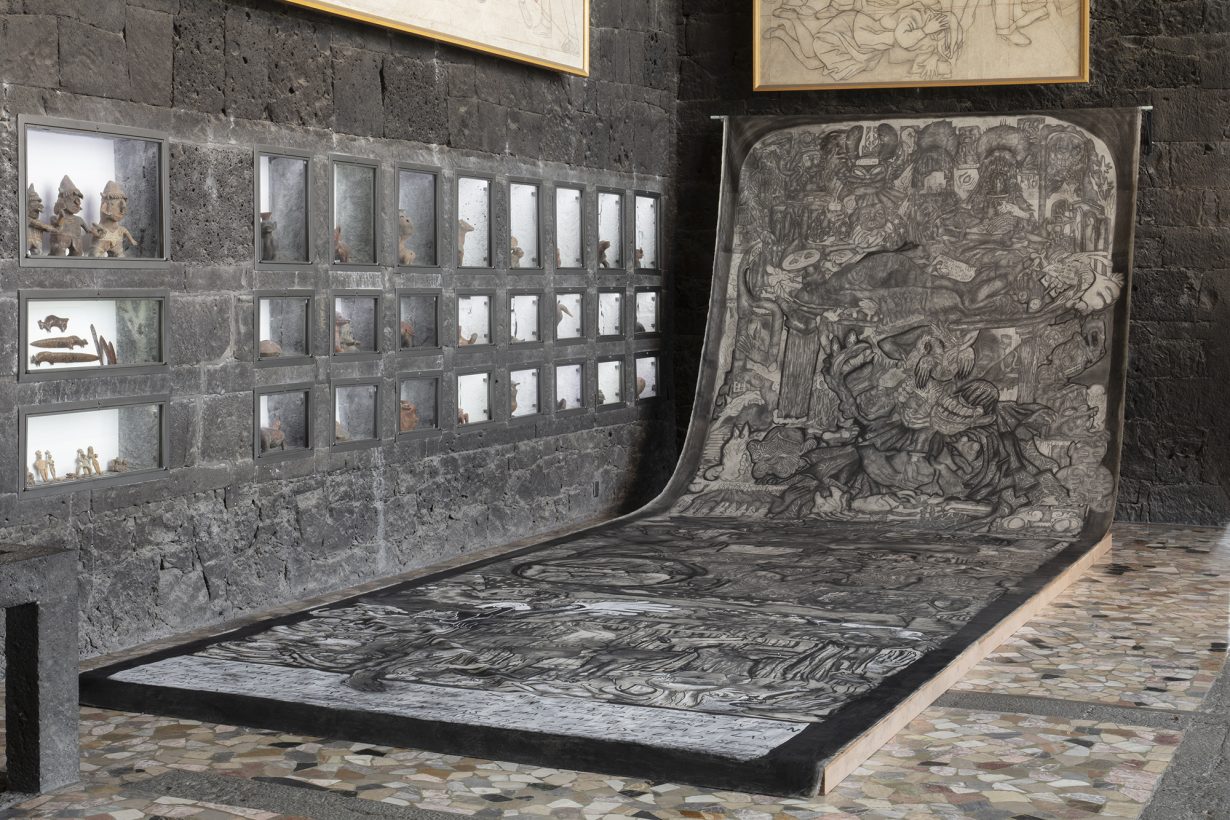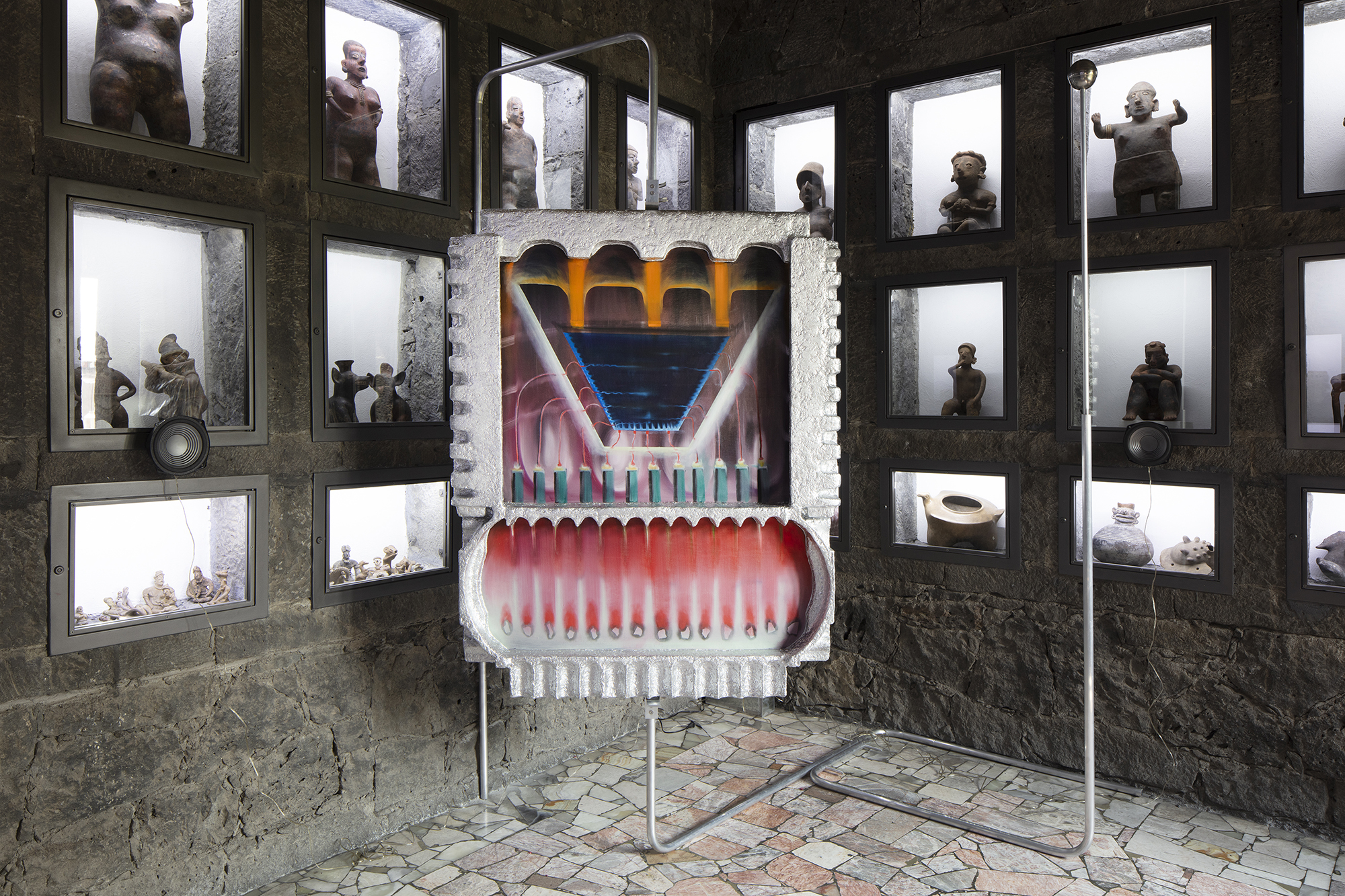In How is Death Written in the South? at Museo Anahuacalli, Mexico City, the artists Carolina Fusilier and Paloma Contreras Lomas consider the spaces made to inhabit the dead
‘El Anahuacalli’, as locals know it, is a heavy lump of a building. All volcanic rock smushed together into clean geometrical lines, it’s as close to the glories of pre-Hispanic architecture as it is to the splendours of modernism. More importantly, it is heavy with history: Diego Rivera, the grandest ghost in the Mexican art pantheon, lovingly had it built, opening in 1964, to house his pre-Columbian art collection – ‘his idols’, as Frida Kahlo called them. He also wanted to be buried in this place: a fitting mausoleum for his outsize talent and legend.
Carlina Fusilier and Paloma Contreras Lomas, the two young Mexico City-based artists sharing the space in How is Death Written in the South?, work with the idea of the tomb, a space made to be inhabited by the dead. A highlight sits right at the entrance: Contreras Lomas’s Maqueta (Maquette, all works 2025) is an intricate altar with ceramic statuettes of anthropomorphic animals – a dog and a cyborg monkey – sitting atop handpainted tiles decorated in loud, beautiful colours. It tells the tale of a sacrificial dance club, where Xipe Totec, the flayed Aztec deity, meets Dante’s Virgil. It’s an afterlife voyage that displays Contreras Lomas’s predilection for mixing the iconic and the prosaic. Also wonderful are Fusilier’s Pasajes I y II (Passages 1 & 11), twin paintings installed at opposite ends of a hallway. Shaped and sized in imitation of the corbel arch repeated throughout the building, they offer a representation of technological-looking portals: one framing a rectangular pool bathed in pale yellow light and surrounded by mysterious doors; the other a circular, vaporous puddle showered by fiery fragments falling from a mysterious above. According to the curatorial text, Fusilier’s father recently passed away, and her pictorial efforts throughout the show address the body’s transition from the material world to the spiritual beyond – and how to attempt communication between the two through technology. Las Inmortalistas I–VIII (The Immortalists I–VIII) is a series of bright, similarly dreamlike paintings framed in rough, foillike frames standing on aluminium structures connected to retrofuturistic-looking equipment that translates the ‘electromagnetic currents’ of the building into a creepy buzzing sound.

Nearby, the area known as ‘the studio’ – which contains Rivera’s largescale sketches for Man at the Crossroads (1932), his ill-fated Rockefeller Center fresco – feels crammed and clunky. Fusilier’s delicate Biocosmic garden, a mechanical ballet of dead plants and flowers reanimated by tiny electronic motors, occupies the middle of the space, while Contreras Lomas’s ‘murals’, two enormously tall graphite drawings splayed on raw canvases, hang on opposite walls. One, Southern funeral, paranormal archive, is a crowded and detailed image of a crucified creature with a snake’s head and a body made of dollars who stands atop a pink car covered in bones, which in turn is driving over the mangled corpses of humanlike dogs. Below it all a caption expounds on the incongruence of an artistic representation of a cemetery in a country scattered with clandestine burial plots. It ends with ‘¡Viva Palestina Libre!’ Whereas Contreras Lomas’s lines were once thick and murky, here they are precise, as economic as her baroque imagination allowed.

Here the artists’ efforts seem at odds with each other: a darkly humorous allegory of the necropolitical order that currently consumes us, sharing space with a twee, poetic observation on the resuscitating power of science. In her huge drawings, Contreras Lomas deals with the well-chewed symbols of neoliberalism gone wrong, the belligerent rebirth of history and the bodies it leaves behind; while Fusilier’s ‘garden’ continues her subtle allusions to Cosmism, the Soviet ideology that called for a technological landscape that would enable the mass resurrection of all previously dead humans in order to colonise the entire universe. Of course, in today’s world, this ancestor of transhumanism evokes its own kind of rationalist, long-termist misanthropy, its own spectre of violence. The misaligned perspectives, however, work in the end, and they feel as radical as they need to be to match the energy of Rivera’s castle.
How is Death Written in the South? at Museo Anahuacalli, Mexico City, through 8 June
From the April 2025 issue of ArtReview – get your copy.
